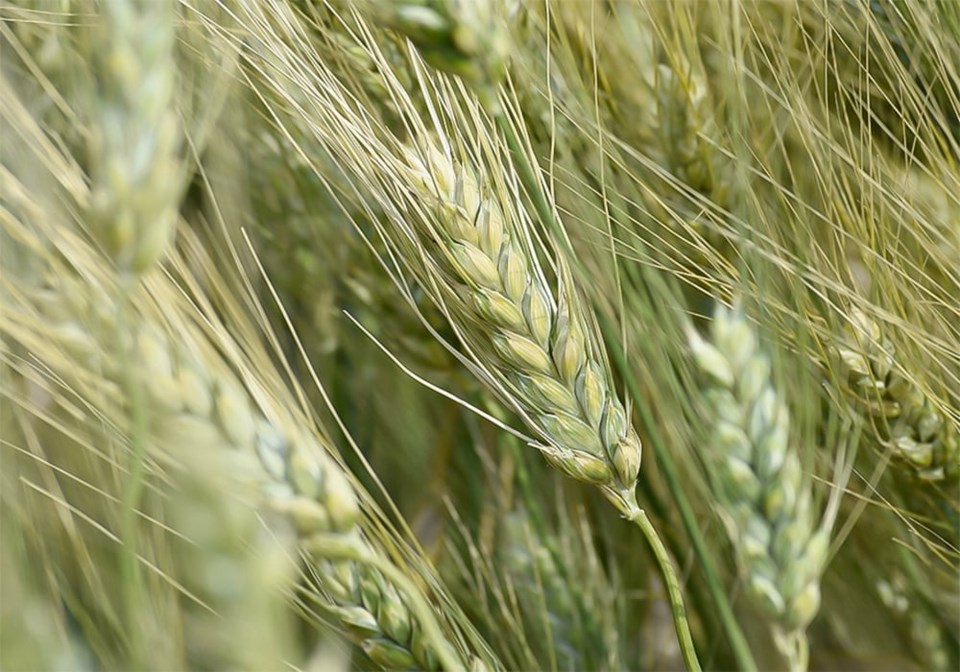SASKATOON — Canada’s durum crop is off to a good start, but there are problems in many other regions, says an analyst.
Farmers in southwestern Saskatchewan and southeastern Alberta received much-needed rainfall this spring.
“They think this is the best start they’ve had in five or six years,” said Neil Townsend, chief analyst with GrainFox.
Agriculture Canada estimates farmers planted 6.34 million acres of the crop and will produce 5.66 million tonnes.
That would result in a total supply of 6.13 million tonnes, a 37 per cent improvement over last year.
Townsend thinks supplies could top 6.5 million tonnes if farmers achieve the same average yield as 2022-23, which was 35.9 bushels per acre.
That would necessitate finding an additional one million tonnes of export demand compared to last year.
Farmers in the United States planted 2.03 million acres of durum, a 21 per cent increase over last year. That crop is also off to a good start.
The big question in the durum market is what will Turkey do this year? The country shocked the durum market by exporting an estimated 1.5 million tonnes of the crop in 2023-24, disrupting sales from other exporters.
“The durum farmers in Canada are not happy,” said Townsend.
“They think the marketing has been disastrous.”
The U.S. Department of Agriculture’s Foreign Agricultural service is forecasting Turkey will produce 4.4 million tonnes of durum in 2024-25, a 10 per cent increase over last year. Some in the trade think it will be closer to 4.7 million tonnes.
The USDA is forecasting two million tonnes of Turkish exports in the upcoming year, but that all hinges on the Turkish government keeping export channels open.
ADVERTISEMENT
“Man, if there was any reason why Turkey wasn’t going to be exporting, then Canada would really be in a good position,” said Townsend.
North Africa is harvesting its smallest wheat crop since 2016-27. The USDA is forecasting a combined 6.6 million tonnes of production out of Morocco, Algeria and Tunisia.
ADVERTISEMENT
North Africa’s wheat production is forecast to be the smallest since 2016-17. That will likely result in strong durum demand from that important region of the world in 2024-25. | Source: USDA
Morocco’s crop is particularly dismal, at an estimated 2.5 million tonnes. The country produces seven to eight million tonnes in a good year.
“A severe lack of precipitation across the vast central and southern growing regions has diminished crop prospects since planting,” the USDA stated in its World Agricultural Production report.
Yields are forecast to be 39 per cent below the five-year average.
Harvest begins in southern Morocco in May and progresses north and east, wrapping up in Tunisia at the end of June, where conditions are far better.
Algeria is forecast to produce three million tonnes, which is five percent below the five-year average.
Tunisia’s production is forecast at 1.1 million tonnes, 2.6 per cent higher than the five-year average.
The report does not break out how much durum production is forecast for each country.
Algeria has been Canada’s top customer through the first eight months of the 2023-24 crop year, purchasing 677,600 tonnes, according to Canadian Grain Commission statistics.
Morocco ranks second with 536,300 tonnes. Italy rounds out the top three with 315,300 tonnes.
The first projections of Italy’s 2024-25 durum crop are in, according to Rossella Polito, an Italian durum farmer who posts as on the X social media platform.
The production number released at a recent durum conference in Italy calls for a maximum of 3.4 million tonnes due to a reduction in acreage and much lower yields in Sicily, Apulia and Basilicata.
That would be 10 per cent smaller than last year’s crop and 15 per cent below the five-year average.
“If realized, it will be the lowest durum wheat production in Italy in about 2- years,” she said.
France is struggling with too much rain. Arete said 65 per cent of the crop was in good to excellent condition as of May 6 compared to 88 per cent the same time last year.
There are also problems in another important region.
“Overall, the production in Mexico is expected to decrease significantly from last year due to much less hectares seeded and low water availability in dams caused by extreme drought and high temperature,” Polito said in a May 11 post.
She is forecasting a Mexican crop of 1.5 million tonnes or less, compared to 1.9 million tonnes last year.
Russia is the other wild card. It burst onto the scene last year, shipping 300,000 to 400,000 tonnes to the European Union.
“We don’t have a good gauge on their spring crops yet, but their winter crops are in quite poor condition,” said Townsend.
Contact [email protected]




